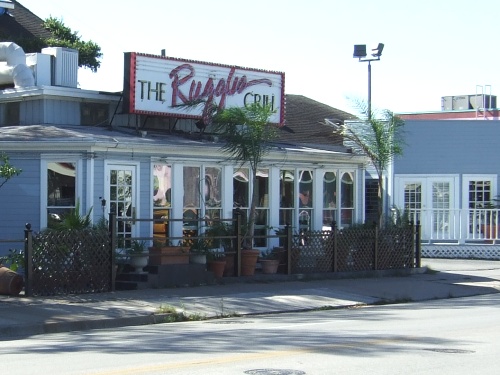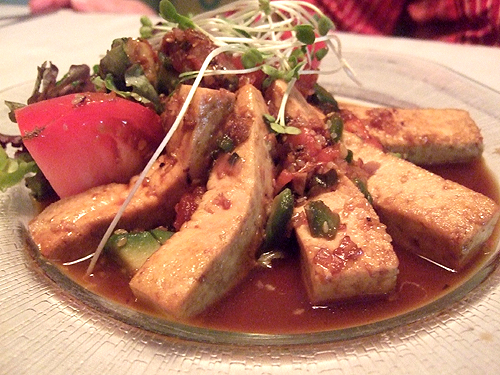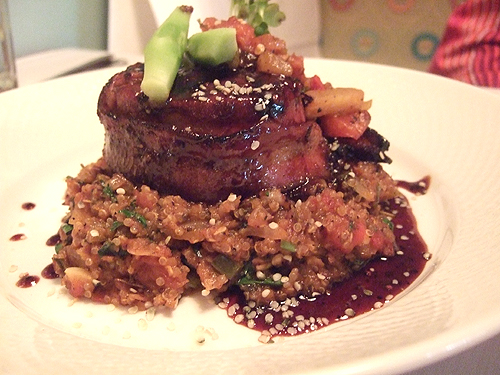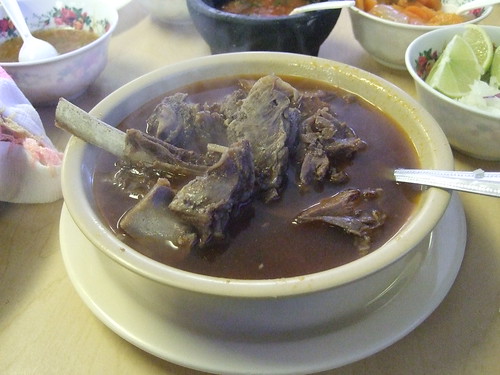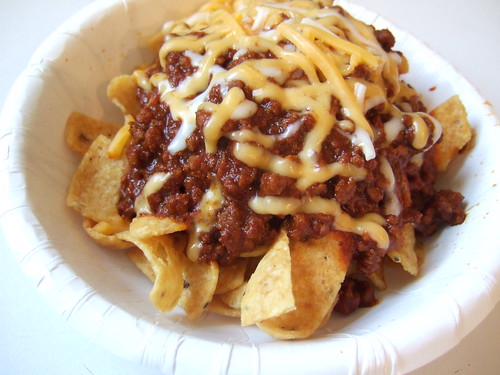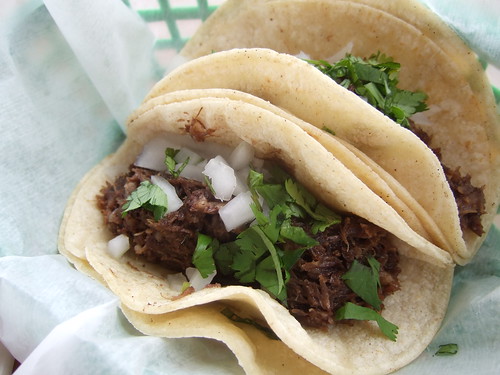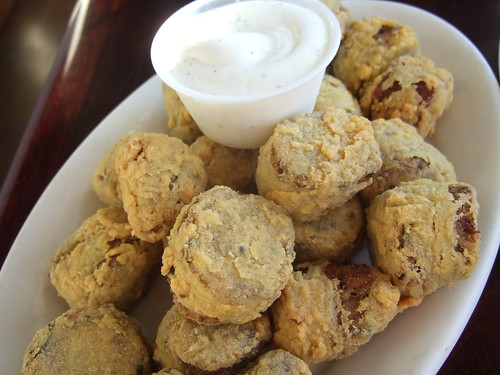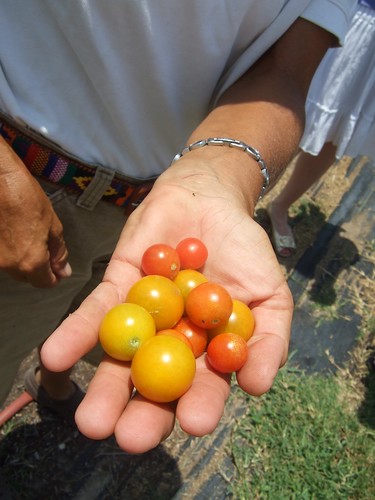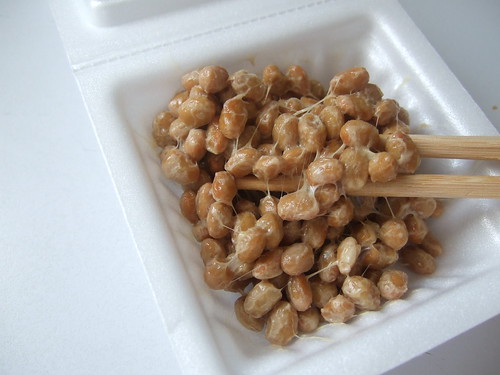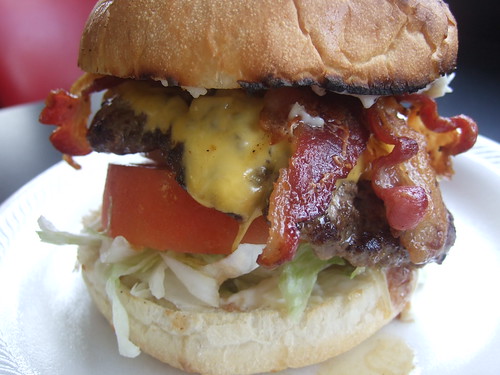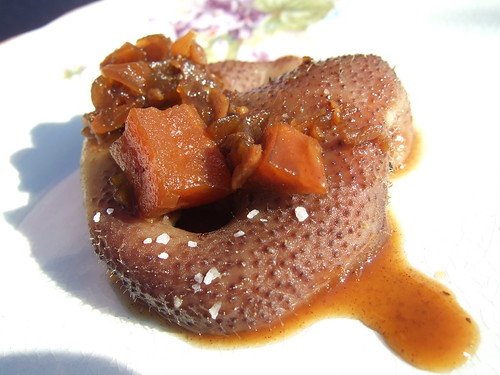The quest to find, eat at, and rate the BBQ crab joints of Southeast Texas has begun.
I'll dispense with the long and storied history of BBQ crab and just say that a comprehensive review of this native Southeast Texas cuisine is long overdue. The fact that BBQ crab joints keep popping up all over Southeast Texas is a tribute to the strong demand in this area. We all grew up eating them, and for many of us BBQ crab evokes memories of summer vacations to the beaches of the Gulf Coast.
The prevalence of BBQ crab in our area is also tied to the family that made it popular — the Sartin family of Sabine Pass and Beaumont. Various siblings, children and extended family of the founders continue to open Sartin's restaurants. At last count, there have probably been 15 to 20 instances of Sartin's Seafood restaurants over the years. On this trip we visited two of them: Sartin's Nederland and the new Sartin's West in Beaumont.
For purposes of this survey, I've organized the geographic disposition of BBQ crab into three areas: 1) Beaumont/Port Arthur/Nederland, 2) Houston/Galveston/Bolivar, 3) East Texas/Orange/West Louisiana.
This trip ventured deep into the heart of BBQ crab country: Beaumont and Nederland. We visited the best known purveyors of BBQ crab in this area: Sartin's in Nederland, and then Isaac Lee's, Sartin's West, and Floyd's in Beaumont. After the fact, I was informed that The Schooner in Nederland may also be serving BBQ crabs. I'll follow up on that.
A note on All-You-Can-Eat Platter service. Obviously the tradition is to serve BBQ crab as AYCE, but in the last 5 years or so that seemed to have changed. Many reasons for the AYCE downfall are promulgated, and a simple supply shortage is certainly believable.
Fortunately, AYCE seems to have returned, at least temporarily. All the locations we visited except Floyd's offered an AYCE option, generally in the $30 range. I believe all options included AYCE everything — in addition to BBQ crabs you can get catfish, shrimp etc.
Of course availability of blue crab is seasonal, and that may explain the return of AYCE. Blue crab season runs from around April to November in Southeast Texas. Supplies currently seem to be plentiful and of good size and quality. It will be interesting to see how many locations are offering AYCE in December.
What follows is a summary of our experiences on a recent Saturday's BBQ crab excursion to Beaumont and Nederland.
Sartin's Nederland
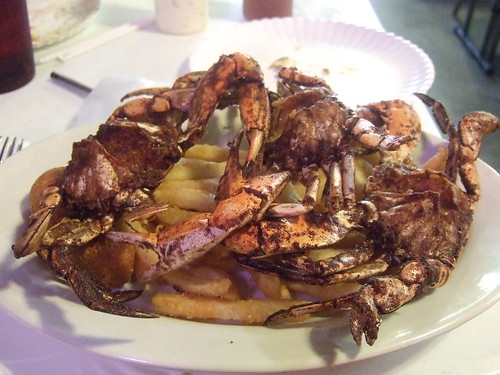
After an hour-and-a-half drive from Houston through rice fields, oil refineries and saltwater marshes, we arrived at Sartin's in Nederland. This location is owned by Kim Tucker, formerly Kim Lynch and formerly Kim Sartin. It's the last bit that's important. Kim was married to Doug Sartin Jr., the son of the original Sartin's founder. While married, Kim and Doug started a Sartin's in Nederland in 1990, but that was short lived. They divorced in 1993, but Kim made another go of it by opening another Sartin's in Nederland in 1997 (no original Sartin family members are involved). If you are judging by seniority rather than blood relations, this is the current "original" Sartin's seafood restaurant. It's still going strong and this location was our first stop.
This location offered AYCE BBQ crab platter service on Wednesdays only. It is in the $30 range. At other times, BBQ crabs are always available, either as a part of a seafood platter, or a la carte. I recall individual crabs being in the $3 range. That's usually the going rate.
Pacing ourselves, Jay and I split a large seafood platter which included two BBQ crabs and a bunch of other goodies to sample. Beer Chris just wanted a couple crabs to sample too, and our very friendly and knowledgeable waitress recommended getting the kids BBQ crab dinner which was couple of BBQ crabs and fries. Hey, whatever works. When the plate arrived, we all stared at the plate of giants crabs and murmurred that kids in Nederland must really like BBQ crab.
The BBQ crab we sampled at Sartin's Nederland was excellent. Of all the joints we visited that Saturday, this came the closest to what I remember eating growing up in Beaumont. A bit larger than average in size, a good coating of spice mix, and, most importantly, flaky, moist, and sweet crab meat. The other dishes were well-prepared also: fried catfish, shrimp, fries, etc. A good start to the day.
Service was excellent — our server appeared to be a manager and was very friendly and helpful. Jay, undeterred by any sign that says "Employees only" when it's attached to a kitchen door, got permission for us to step into the kitchen. The industrial strength fryers and bins of BBQ crab were an impressive sight. This is clearly an operation that has been around for a long time and that knows what it's doing.
As we left, Kim Tucker introduced herself. She was interested in hearing about our BBQ crab tour. From our 10-15 minute conversation, it is obvious she takes pride in her operation and is a worthy protector of the Sartin's Seafood name.
Isaac Lee's - Beaumont

Isaac Lee's is owned by sisters Kim Vawter, Stacy Mathews and Tracy Mathews. After Kelli Sartin (daughter of the original Sartin's founders) opened a Sartin's restaurant in Clear Lake, Texas, the Mathews sisters later bought that restaurant. And in what became a major point of contention, they seem to have thought they bought rights to the "Sartin's" name as part of the package.
In addition to buying the Clear Lake restaurant, the sisters also later opened a branch in Beaumont on College Street in an old Denny's location. They advertised both restaurants as "The Original Sartin's."
This apparently did not sit well with Kim Tucker at the Sartin's in Nederland (there seems to be some friction between Kim Tucker and Kelli Sartin, but then again, there seems to be some friction between everyone involved in Southeast Texas BBQ crabs and the Sartin's trademark). Eventually Kim Tucker would sue the Mathews sisters in federal court in Beaumont for trademark infringement. Things get murky from there (I've yet to speak with Kelli Sartin -- I'm working on that -- and I may try to pull the case records next time I'm in Beaumont). In any case, the Clear Lake Sartin's closed and the Beaumont location rechristened itself "Isaac Lee's," apparently named after the sisters' father.
So that's a whole lot of groundwork laid for this stop on the BBQ crab tour, and we'd not even yet stepped foot in the restaurant. Such is the baggage that comes with eating BBQ crabs in Southeast Texas. We rolled up to Isaac Lee's around 1pm on a Saturday. There were a couple of tables filled, but generally it was quiet. The space itself is no-frills, with a few marine-themed decorations like nets and anchors on the walls. It reminded me of a Red Lobster circa 1978, but in a good way. Walls of windows let the light shine in and made the place bright and welcoming.
We ordered a half dozen BBQ crabs, chicken and sausage gumbo, and boudin balls. Note that this location is the only BBQ crab joint I know of that still offers AYCE BBQ crab all day, every day for $28.50. God bless'em. For the record, the gumbo was not so good (watery broth, rubbery sausage), and the boudin balls were pretty good.
As for the BBQ crabs, these were definitely the most unique taste/preparation. The spice accretions on the crabs themselves were quite light. Still the spice flavoring was good. I'd guess they also use the Fiesta mix. Crab size was good, and the meat was steaming and flaky.
However the most unique aspect of this BBQ crab was the taste of the crab meat. Traditionally, good BBQ crab meat is super sweet and flaky, with the spice dredge occasionally getting mixed in during the eating process to offer an otherworldly sweet/savory/spicy combination. But as Jay first pointed out, the crab meat at Isaac Lee's tasted vaguely of chicken broth, or at least unusually salty. We pondered and puzzled over this for a while. We asked the waitress if they parboiled the crabs, perhaps in salty water, before BBQ-ing (frying) them. She checked with the kitchen and they said no.
The salty flavor of the crab meat was not a big deal — the overall experience was all quite satisfactory, if not exceptional. We came up with a couple of possibilities for the salty crab meat, the first being that maybe the oil was old and infused with salt and spices and maybe the crabs were a bit overcooked in that oil. Alternatively, we surmised that crabs that taste like this may be secretly parboiled to give them a little extra edge (at this point we were just thinking out loud — we took the waitress on her word). There is some precedent for this. Some BBQ crab recipes call for the crabs to first be marinated in a liquid smoke mixture to give them an even more BBQ-y taste, then dredged in spice rub, then deep fried.
In general, Isaac Lee's is a good place for BBQ crabs especially if you are seriously hungry and want an AYCE option and the other crab joints aren't offering them at that time/day.
Sartin's West - Beaumont
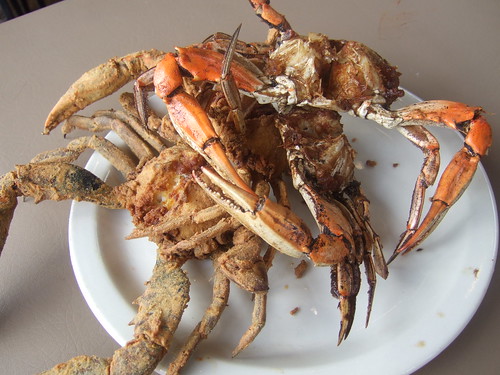
Sartin's West is the most recent endeavor of Doug Sartin Jr. and his current wife Emily Summers. Doug is the oldest son of the original Sartin founders, Charles and Jeri Sartin (still alive and living in Sabine Pass). Doug and his first wife Emily opened the Sartin's in Beaumont north of Parkdale Mall in 1990. When they got divorced, Kim got ownership of it. She also opened the Sartin's in Nederland (above). In 2002 Kim passed control of the Beaumont Sartin's to Geneva Broussard, a longtime Sartin's associate. Hurricane Rita closed that location in 2005.
Around that time Doug Sartin and his new wife Emily opened a Sartin's Seafood out on Highway 90 west of Beaumont. It was very close to where my sister lived at the time — I drove by it all the time. Eventually they would move into town to Calder Street where the old Cody's used to be. But it looks like Hurricane Ike hit that location hard and it was closed by 2008. The current location of Sartin's West on I-10 in Beaumont opened in early summer, just in time for crab season. Every time I've driven by, it's looked busy.
Like almost all previous incarnations of Sartin's West, this location is in a longtime restaurant location. The last business here was a comedy club. It's a great building for a restaurant, with a huge dinign room space with lots of light. I imagine the kitchen is industrial strength too.
Jay, Beer Chris, and I arrived around 2pm. There were a few large tables occupied. As with every other Sartin's restaurant I've been in, the staff is mostly made up of cute local girls in tight shorts and T-shirts. I suppose if you're a waitress at Sartin's and are lucky enough, you'll marry a Sartin and open a Sartin's restaurant somewhere.
Sartin's West was offering AYCE BBQ crab for around $30. We had just about had our fill so we asked to order just four crabs. The waitress surprised us by quoting $2 per crab. This is a lot lower than the going rate of $3 per crab. I assume she new what she was talking about — on the otherhand, maybe she had never had a request for individual crabs and just made a guess. In any case, $2 is what we paid.
The menu included two crab options: BBQ or Fried. Intrigued, we ordered two of each. Turns out the fried option is just a crab dipped in batter and fried without the BBQ seasoning. (Sartin's in Nederland also offered the fried crab option which I noticed on the menu some time later).
The crabs were larger than average and perfectly cooked. How can you tell? Because this was the only location where each crab yielded the highly prized "crab claw lollipop." With the best BBQ crabs, when you gently pull the crab legs from the body, a giant chunk of crab meat should come off with it. Otherwise you have to dig around in the socket to get to it. All of the crabs at Sartin's West willingly yielded the sweet and flaky crab meat.
As far as the seasoning goes, the fried crabs were absolutely delicious. The batter was nicely seasoned and may have had some impact on sealing in the super tasty crab meat. The BBQ crab had lighter spice dredge than Nederland, but more than Isaac Lee's. I'd say it was just right. We told the waitress we thought the BBQ crabs were better here and she acted surprised because she thought Sartin's West and Sartin's Nederland used the same spice. Based on Kim Tucker's comment's earlier in the day, I can then assume Sartin's West also uses the Fiesta seasoning.
We polished off the four crabs, and frankly, I couldn't wait to come back. At this point Beer Chris had to continue on to Louisiana, so Jay and I headed down the I-10 service road the few yards to the final stop on our tour — Floyd's Cajun Seafood.
Floyd's - Beaumont

At this point in the narrative we diverge from the Sartin's branch of Southeast Texas seafood history, and take up the even more entangled story of the Landry's branch of Texas-Louisiana seafood lore.
The Landry brothers — Don, Willie, and Ashby — would start the Landry's/Don's Seafood empire in Louisiana and two of their sons — Billy and Floyd — along with a host of business partners, brought the Cajun style seafood to Southeast Texas and Houston. The sons and partners would eventually sell out to Tilman Fertitta who would create the Landry's Restaurant empire. Billy Landry died several years ago, but Floyd Landry is still going strong.
In addition to Floyd's locations in Webster and Pearland, the Floyd's in Beaumont was created from a venerable Don's seafood restaurant that Floyd re-acquired in 2006. I spent a good deal of my time growing up in Beaumont going to that Don's location — it was a family favorite. When Jay and I pulled up at around 3pm, this was the first time I had been back since it had changed to Floyd's. It had been 7 or 8 years.
The interior had been completely gutted and opened up. Floyd's signature horseshoe bar took up half the space, a dining room the other half. At 3pm, there were a few tables occupied and a few people at the bar, including hostesses. We sat at the bar and asked the bartender about BBQ crabs.
BBQ crabs are only briefly mentioned on the Floyd's menu, so the bartender ran down the options: 3 crabs for $9.75, 6 for 16.95, and 12 for $28.95. This is typical pricing for restaurants that do not do a high volume or are not known for BBQ crabs. There is no AYCE option.
I placed an order for the minimum 3 BBQ crabs. The bartender went back to the kitchen to put in the order. When she came back she related that the fryers were not yet ready and we'd have to wait until 4pm. I told her we'd come back some other time. But before we could leave, one of the cooks came out and said he'd fire up the fryers just for us. They seems genuinely accommodating, I was impressed. I love Floyd's but sometimes the service and quality can be wildly inconsistent. I sometimes get the feeling that the inmates are running the asylum at Floyd's, but in the best possible way.
When the crabs came out, they were about average size, with probably the heaviest spice dredge of the day. They were super salty, which for Jay is always a deal-breaker. I plowed ahead, even though I was stuffed from eating BBQ crab all day. These crabs were not quite as meaty and sweet as the ones we had earlier, but still very serviceable.
As for the salt issue, the crabs were edible for me, but I could taste the salt on my lips afterwards. Did they use their own spice blend? Were the crabs always this salty? I related to Jay that this may be the normal preparation — there is rarely anything subtle about Floyd's. I figured I'd visit a couple more times before I made a conclusion.
And with that final stop, Jay and I piled into the car and made the drive back to Houston. The Beaumont/Nederland leg of the BBQ Tour was complete. Or was it? I later found out that The Schooner in Nederland may be serving BBQ crabs. Looks like a followup visit may be in order.
BBQ Crab Ratings
Here are how the various participants rated the BBQ crabs on this day. Keep in mind that based on our experience, the quality of BBQ crabs can vary wildly from day to day and from season to season. In all probability, the Sartin's restaurants will always be top two, with the exact order determined by the vagaries of preparing BBQ crab.
Houston Foodie
1. Sartin's West
2. Sartin's Nederland
3. Floyd's Beaumont
4. Isaac Lee's |
Jay
1. Sartin's Nederland
2. Sartin's West
3. Isaac Lee's
4. Floyd's Beaumont |
Beer Chris
1. Sartin's West
2. Sartin's Nederland
3. Isaac Lee's
|
